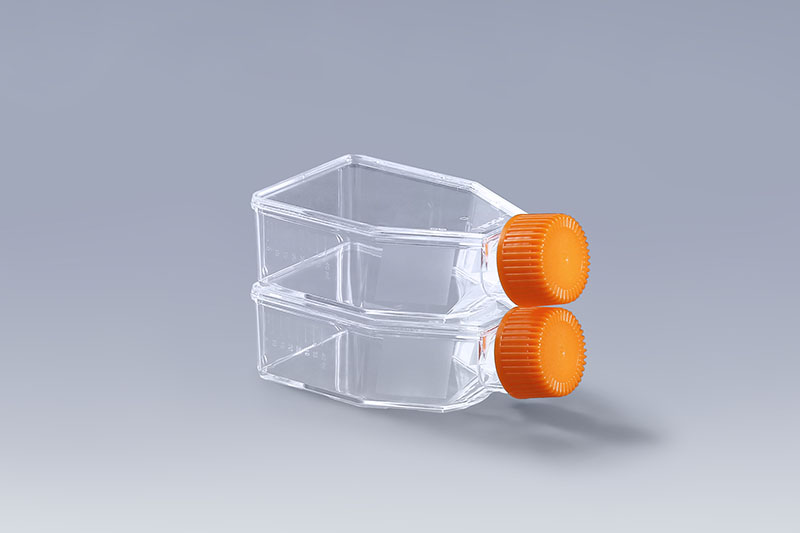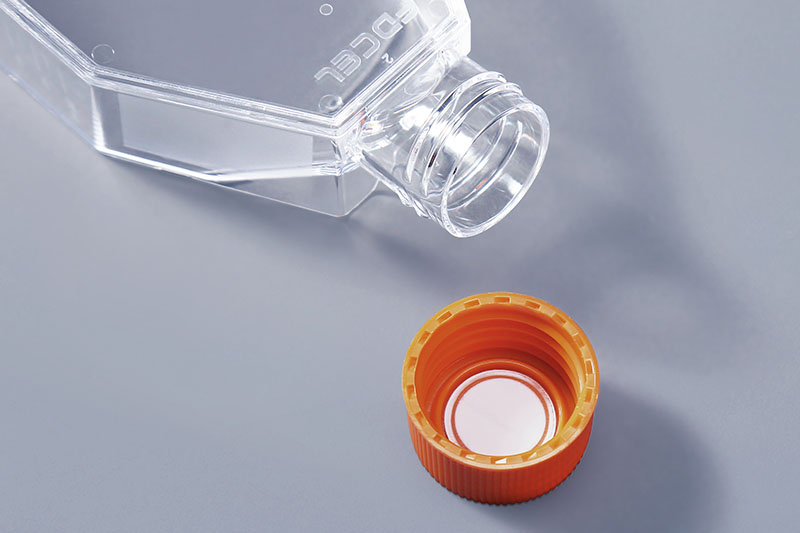Cell vacuolation refers to the appearance of vacuoles (vesicles) of different sizes in the cytoplasm and nucleus of degenerated cells, and the cells are cellular or reticular. There are many reasons for this situation. We can reduce the vacuolation of cells in the cell culture flask as little as possible through daily operations.
1. Confirm the cell state: determine the cell state before culturing the cells, and try to select the cells with the highest generation number for cultivation, so as to avoid vacuoles due to aging of the cells during the cultivation process.
FuDau T25 Cell Culture Flasks
2. Determine the pH value of the culture medium: confirm the suitability of the pH of the culture medium and the pH required by the cells to avoid affecting cell growth due to inappropriate pH.
3. Control the trypsin digestion time: when subculture, select the appropriate concentration of trypsin and select the appropriate digestion time for digestion, and avoid too much air bubbles during the operation.
4. Observe the cell status at any time: When culturing cells, observe the cell status in the cell culture flask at any time to ensure that the cells need sufficient nutrients and avoid cell vacuolization due to nutrient deficiency.
FuDau T75 Cell Culture Flasks
5. Try to use fetal bovine serum with good quality and regular channels, because such serum is rich in nutrients and has few exogenous stimulating factors, which can effectively avoid such problems.
The above operations can reduce the vacuolation of cells in the cell culture flask. In addition, the sterility requirements should be strictly implemented during the operation to reduce the possibility of various contamination. If the cells are found to be contaminated, they should be discarded in time to avoid affecting subsequent experiments.
The FAI climbed 5.9 percent year-on-year in the first 11 months of 2018, quickening from the 5.7-percent growth in Jan-Oct, the National Bureau of Statistics (NBS) said Friday in an online statement.
The key indicator of investment, dubbed a major growth driver, hit the bottom in August and has since started to rebound steadily.
In the face of emerging economic challenges home and abroad, China has stepped up efforts to stabilize investment, in particular rolling out measures to motivate private investors and channel funds into infrastructure.
Friday's data showed private investment, accounting for more than 60 percent of the total FAI, expanded by a brisk 8.7 percent.
NBS spokesperson Mao Shengyong said funds into weak economic links registered rapid increases as investment in environmental protection and agriculture jumped 42 percent and 12.5 percent respectively, much faster than the average.
In breakdown, investment in high-tech and equipment manufacturing remained vigorous with 16.1-percent and 11.6-percent increases respectively in the first 11 months. Infrastructure investment gained 3.7 percent, staying flat. Investment in property development rose 9.7 percent, also unchanged.
 English
English




















































